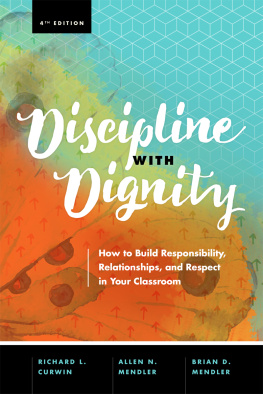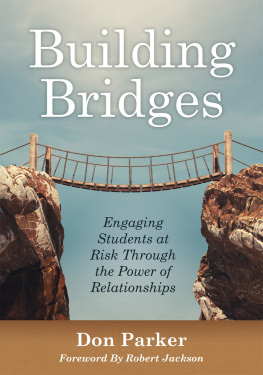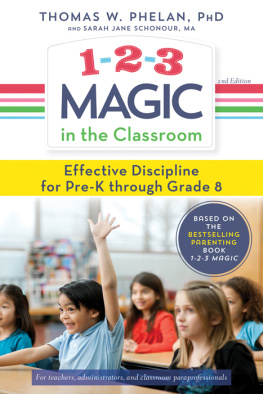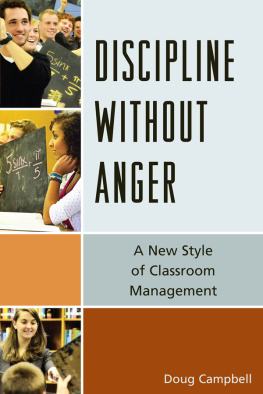Dedication
....................
To my sister Joyce, who, from the time I was born, has been an inspiration to me. She introduced me to the arts and literature at an early age. More than anything, she showed me the majesty of life.
Rick Curwin
To my wife and life partner, Barbara Mendler, for your patience and support during what has been a challenging and emotionally laden process. We got through it, bruised but stronger together than ever. I am forever grateful for all you are in my life.
To my three adult children, Jason, Brian, and Lisa, and their spouses, Ticia, Renee, and Zach, for your love and the gifts of my amazing grandchildren: Caleb, Ava, Megan, Eli, Brookie, and Avi. You enrich my life in ways I have no words to describe.
Allen Mendler
To Renee: wife, mom, daughter, aunt, and friend. Thank you for the artwork that fills our home. Your talent and passion amaze me every day.
Brian Mendler
Acknowledgments
....................
Rick Curwin
I would like to thank David Curwin, Andrew Curwin, Menashe Koren, Hagit Furst, Elizabeth Karvonen, Sid Simon, and the students and faculty at David Yellin College.
Allen Mendler
From the depths of my heart and soul, I thank the thousands of educators who have given me the honor of reading my books, attending my seminars, working with me side by side with lots of tough but wonderful students, sharing your strategies with me, and affirming the value of this work by using it to impact the lives of your challenging students in powerful ways. You are too numerous to mention by name, and I would only be doing an injustice to some by trying to list all. You have shown how good discipline is best achieved through relentless respect, shared responsibility, courage to step outside the box, determination, and a never-give-up mentality.
I also want to thank ASCD for many years of supporting our work, culminating in your invitation to do this project, and to Allison, Miriam, and Stefani for your professionalism, kindness, and patience as you guided us along the way.
Brian Mendler
Elijah and Brooklyn, thank you for the joy you provide. I am so grateful I get to be your daddy. I love you both times infinity.
Special thanks to my dad, Allen. This process taught me about loyalty, dedication, friendship, and trust. Congratulations on the 4th edition. I am honored to be a part of it.
To my mom: thanks, sorry, and I love you.
To my brother, sister, sister-in-law, and brother-in-law: thanks, sorry, and I love you.
Jon Crabbe, Elizabeth Sherwood, Diane Long, Colleen Zawadzki, and our staff at the Teacher Learning Center: your expertise, professionalism, and dedication to our business are always appreciated.
Greg Annoni, Beth Schill, Kim Wilks, Kandi Antonetti, Kathleen Skeals, Melissa Stephanski, Tonya Hunskor, Denise Reinert, Charlie Stegall, Lori Charlet, Wendy Claussen, Joseph Corr, Dale Naylor, Laura Glardon, Sylvia Welchans, Penelope Martin-Knox, Yousef Nasouf, Jake Troja, Kristin Dudek, Don Hulin, Dierdre McKinley, and the thousands of other educators that continue to support me: thank you from the bottom of my heart. I wish I could acknowledge you all by name (I really did ask!).
To the What Great Educators Do Differently (#wgedd) crew: Jimmy Casas, Jeff Zoul, Todd Whitaker, Joe Sanfelippo, Kayla Delzer, LaVonna Roth, and everyone else, thanks for inviting me to be a part of such an amazing group. I am honored.
Baruti Kafele: you inspire so many. Thanks for the mentorship. I appreciate you.
To all my social media followers and friends: this career would not be possible without the knowledge and inspiration you give me every day. I am grateful for each of you.
To everyone at Developmental Resources, especially Phil Price and Keli Wickersham: I am thankful and humbled to be such a major part of your conference every year.
Finally, to all the members of my recovery meetings: without you, none of this is possible. "Keep coming back; it works if you work it and you're worth it so work it."
Introduction:
What Is Discipline with Dignity?
....................
When the first edition of Discipline with Dignity was published in the 1980s, the United States was in the mood for a strong stand on law and order. Years earlier, protests against the lack of civil rights for minorities and the unequal treatment of women had begun wholesale questioning of and frequent challenges to the status quo. Many people began to view the standards and norms that had defined our institutions for generations as flawed, unfair, and discriminatory.
Schools were not exempt from challenges to the country's values, mores, and practices. Educators were increasingly faced with students who did not behave and parents who were absent, pre-occupied, or inclined to side with their children. This situation led to teacher frustration along with demands for more obedience from students and harsher penalties for those who broke the rules. Schools claimed it was easier and fairer to students who worked hard to rid classrooms of students who proved they didn't belong. Programs developed to put control back in the hands of teachers too often relied on rewards and punishments and reduced choices, and they often led to the removal of students who refused to comply. Minorities were affectedand punishedthe most. Standardized tests were beginning to be used, not just to judge students but to judge teachers and schools as well. Although these programs seldom work as intended, many schools continue to use them.
Schools became a two-tiered system, with students who followed the rules being rewarded and those who didn't being punished. What educators even now sometimes forget is that removing troublemakers from school does not eliminate them from life. Young adults who don't graduate from high school cost our society a fortune in expenses related to prison, welfare, and crime. Crime is one job that accepts anyone, regardless of educational status.
We created Discipline with Dignityan approach that supports various interventions, strategies, and constructs intended to help children make better choices and to make life better for teachersto offer educators a different vision. When we began, improving student behavior by building relationships was a new concept. Today this approach is much more common, but traditional humiliation, detention, in-school suspension, and suspension remain options in almost all schools we visit; most continue with honor roll and awards assemblies based solely on grade point average. At the time, we believed that rewards and punishments created winners and losers and did not bring out the best in all students. We realized that many troubled students would not accept simply doing as they were told and would be more likely to comply if they were included in the decisions that affect their lives. We advocated for involving them in developing school and classroom rules and consequences rather than imposing rewards and punishments upon them.
We saw that teachers were no longer being effective using simple obedience methods; we knew that to influence change, teachers needed to earn the trust of their students. We noticed that for some older students, acting out was a choice, done out of disdain for individual teachers. We watched kids behave perfectly for one teacher and completely disrupt the classroom for a different teacher the next period. We advocated for schools to focus more on creating responsible citizens who could think and decide for themselves. We believed humiliating people to gain compliance only sprouted more anger and, ultimately, less compliance. Our vision led to appropriate behavior in the presence and








